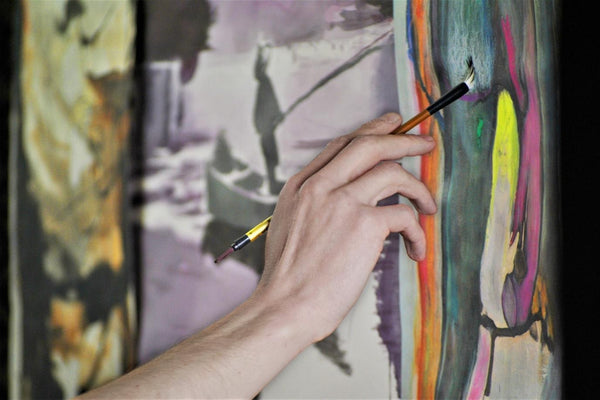Common Art Terminologies Every Art Lover Should Know 📰

All art connoisseurs would agree that we should let the art speak for itself. However, while they may be correct, it doesn’t hurt to know a few art-terms to describe your own artwork, your favorite artist’s work or any sort of art installation you get to observe. Such terminologies help distinguish between the various forms of art out there and categorize various different classifications under these names.
Selecting only some art terminologies was a difficult task. With art as a medium that has evolved over centuries, the various names and categories that have emerged alongside are also in abundance. If you are just starting out as an artist or an observer of the art, the following glossary of art terms will definitely come in handy:
Figurative
Figurative, or representational art, is mostly applied to paintings or sculptures. Contrary to abstract art, this form of art attempts to show objects just as they appear or in some identifiable way. Also called ‘figuration,’ this form of art was dismissed throughout the 20th century as artists were more interested in pursuing the ‘universal language of abstraction.’
Figurative art can also be termed ‘realism,’ however, it is also considered much more than that. In general terms, realism attempts to depict people, places and objects realistically, without any sort of ‘artistic’ sterilization. Notable paintings such as Pablo Picasso amalgamated figurative art with abstract art, painting figures that would not merely exist but were still present in some sort of recognizable form.
Abstract
An exceptionally widely used term, abstract art can be described as the concentration of color and form of objects, at the expense of representation. One can term this form of art ‘non-representational’ as it allows the mind to work more to assess, create and understand the artwork.
Over the centuries, abstract art is seen to depict virtues of order, purity, simplicity and spirituality. It should be studied and evaluated differently from any other form of art, and can only be fully understood if you allow yourself to submerge in abstraction.
To learn more about abstract art, visit Mark Humes Gallery and read up more on this continuously evolving art.
Gestural
In his 1970 book The Triumph of American Painting: A History of Abstract Expressionism, Irving Sandler described ‘gesture painters’ as an extension of Abstract Expressionism. Jackson Pollock insisted on such forms of painting and stated that gestural painting is not only in the process of painting, but also existent in the finished work. Even though critics suggest his splatters of paint on the canvas were a depiction of his psyche, gesture painting evolved into an official art form through Pollock’s expressionism.
In broad terms, gestural art is the artwork that describes dynamic brush strokes, pencil marks or sculptural modeling techniques to highlight the spontaneity and emotional intensity of the artist. Some of the contemporary and rather most popular examples, include Vincent Van Gogh’s swirling landscapes to depict the intensity of strokes used.
Perspective
If you are an art observer and love visiting a gallery, perspective is ideally something you should know. This creates depth in a painting through the use of lines that allow the image to be three-dimensional. The closer you look at a perspective image, the more details will appear and the larger it will be.
There are two main types of perspective strategies:
- Linear Perspective: This creates the illusion of space using parallel lines meeting at a vanishing point
- Atmospheric Perspective: This concentrates on space and distance using various color tones and minute details to paint or draw an object
Symbolism
Many believe symbolism is a personal experience based on what an observer or artist feels from an artwork. However, historically symbols have referred to broadly accepted visual references that depict a sort of idea or meaning. Symbols could be cultural, religious or political, but more often than not, they always have some representation attached to them.
Throughout centuries, many artists have conformed to their own symbols as it is their form of expressionism through their work. The overall idea of symbols has definitely evolved, but in hindsight, it remains primarily a sort of ‘representation.’
The art glossary certainly does not end here. Depending on your fondness for art and your experience with it, there are numerous other terminologies that are extremely important also. The Museum of Modern Art has compiled an extensive art glossary that is helpful and covers almost all art terms out there. With a medium as broad and meticulous as art, every type and piece of information received is a useful one!












